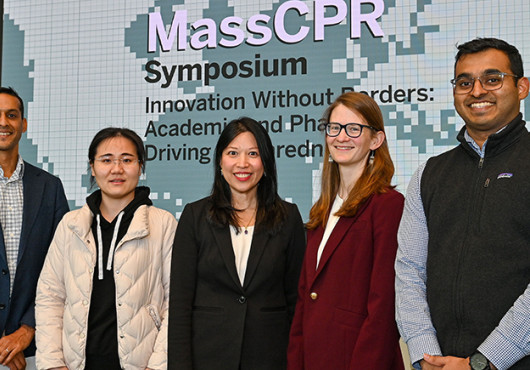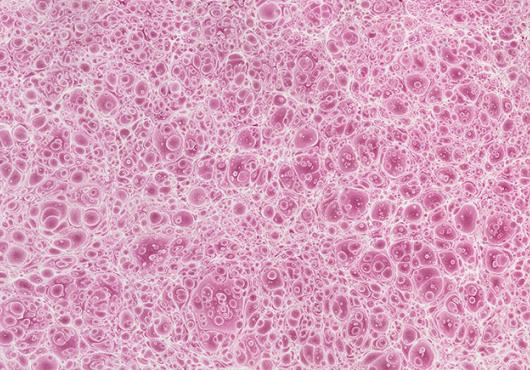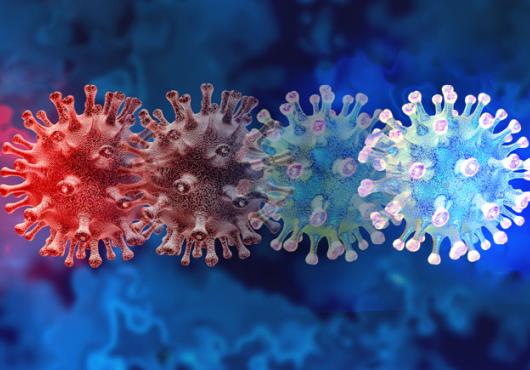
This article is part of Harvard Medical School’s continuing coverage of medicine, biomedical research, medical education, and policy related to the SARS-CoV-2 pandemic and the disease COVID-19.
Pregnant women infected with SARS-CoV-2 appear to be at higher risk of developing severe cases of COVID-19 than infected women who are not pregnant.
Yet newborns are mostly doing well. Reports indicate that only about 5 percent of babies born to COVID-19-infected mothers are themselves infected, and most newborns who test positive have mild or asymptomatic infections that rarely need mechanical ventilation.
Three new studies from Harvard Medical School researchers at Massachusetts General Hospital and Boston Children’s Hospital provide insight into what may be happening.
The results could help researchers and doctors better understand how the body protects against COVID-19, improve care for pregnant women and newborns, and inform vaccine timing.
Viral barrier
The first study, published in October 2020 in the journal Placenta, examined how the placenta—the complex and little-understood organ linking parent to fetus—responds to the coronavirus itself.
First author Elizabeth Taglauer, an HMS instructor in pediatrics and a placental immunologist at Boston Children’s, and senior author Elisha Wachman at Boston University School of Medicine and Boston Medical Center followed pregnant women with COVID-19 and studied a variety of maternal and fetal samples, including placentas discarded after delivery.
The team’s findings indicate that SARS-CoV-2 can only partially penetrate the placenta.
Even when babies were uninfected, the researchers detected SARS-CoV-2 spike protein in the placental villi, specifically in the outermost layer, which directly contacts the mother’s blood and is the first barrier the virus must cross to get from mother to fetus.
The researchers also found that ACE2, the primary receptor for SARS-CoV-2, was present in this placental layer at lower levels in infected than in uninfected mothers. Taglauer plans to investigate whether the placenta downregulates ACE2 as a protective measure against infection.
The researchers found TMPRSS2, another protein the virus uses to enter cells, in placental tissues from infected and uninfected mothers at lower levels than ACE2. This suggests that the virus uses other receptors to penetrate the placenta—another question for further exploration.
Taglauer and Wachman are now collaborating with Jeffrey Moffitt, HMS assistant professor of microbiology and of pediatrics at Boston Children’s, to analyze every cell within the placental tissues of infected and uninfected mothers and profile the genes important to COVID-19. They will use a technology called MERFISH that directly images RNA.
In the meantime, Taglauer and Wachman built a biorepository of almost 80 placentas from COVID-19-positive mothers and have made it available as a resource for others.
The researchers hope the work will not only lead to better care for pregnant women but also reveal more about how the virus infects the lungs and other organs.
“The anatomy of the placenta is very similar to that of the developing lungs and intestines at certain stages,” said Taglauer. “And unlike lung or intestinal tissue from COVID-19 patients, we can get our hands on this tissue right away.”
The Placenta study was funded by the Boston University Clinical and Translational Science Institute COVID-19 Pilot Grant Program (UL1TR001430), National Institutes of Health (1T32HD098061-01) and the BU School of Medicine Medical Student Summer Research Program.
Antibody discrepancy
The second study, published Dec. 22, 2020, in JAMA Network Open, similarly found that pregnant women with COVID-19 don’t pass the virus to newborns—but also found that mothers may pass along fewer than expected protective antibodies.
A follow-up study by members of the same team, published the same day in Cell, expands on the antibody findings.
The JAMA study included 127 pregnant women in their third trimester who received care at three Boston hospitals between April 2 and June 13, 2020. Among the 64 women who tested positive for SARS-CoV-2, investigators detected no virus in maternal or umbilical cord blood despite detection in the women’s respiratory system. They found no signs of the virus in the placenta, either, and no evidence of viral transmission to newborns.
The team discovered that although most of the women who tested positive developed antibody responses against SARS-CoV-2 proteins, mother-to-newborn transfer of these antibodies through the placenta was significantly lower than transfer of antibodies against influenza.
Transfer of antibodies across the placenta to the fetus is typically highest in the third trimester, so it was unexpected to see such a reduction compared with flu antibodies, said first author Andrea Edlow, HMS assistant professor of obstetrics, gynecology, and reproductive biology at Mass General.
The Cell paper reveals that the cause of the lower than expected antibody transfer may be alterations to these antibodies after they’re produced.
The team compared maternal antibodies against the flu, whooping cough, and SARS-CoV-2, and how these antibodies transferred across the placenta. They found not only that SARS-CoV-2-specific antibodies were transferred at significantly reduced rates during the third trimester compared with the flu and whooping cough but also that the coronavirus antibodies were less functional than those against influenza.
The scientists found that alterations in glycosylation, a process of attaching carbohydrates to molecules, may be to blame for the reduced transfer. They observed that carbohydrates attached differently to SARS-CoV-2-specific antibodies in maternal blood than they did to influenza- and pertussis-specific antibodies. This abnormality may cause the coronavirus-specific antibodies to get stuck in the maternal circulation because they cannot bind as well to antibody receptors on the placenta.
The team found that some functional antibodies were able to cross the placenta because of infection-induced increases in total maternal antibodies as well as higher placental expression of receptors that bind to the altered antibody carbohydrate pattern. Some of the antibodies that transferred the best were also the most functional, the researchers discovered.
The findings from both papers have implications for designing and administering COVID-19 vaccines to pregnant women, the authors said.
“Specifically, it highlights that pregnant women are a key population to consider in vaccine rollouts,” said Edlow, who is co-senior author of the Cell paper. “It also raises questions regarding the optimal timing of vaccine administration to best support maternal and newborn immunity.”
“Vaccine regimens able to drive high levels of the COVID-specific antibodies with glycosylation patterns favored by the placenta for selective transfer to the fetus may lead to better neonatal and infant protection,” Edlow added.
Understanding how antibody transfer varies by trimester may point to critical windows in pregnancy for vaccination to optimize parental and infant protection.
“We are beginning to define the rules of placental antibody transfer of SARS-CoV-2 for the very first time—catalyzing our ability to rationally design vaccines to protect pregnant women and their newborns,” said Galit Alter, HMS professor of medicine at Mass General, senior author of the JAMA Network paper and co-senior author of the Cell paper.
Both studies were funded by the National Institutes of Health (grants 3R01HD100022-02S2 , K23HD097300, K08HL146963, K08HL143183, U19AI135995, R37AI80289 and R01AI146785)), with additional support from the March of Dimes, Mass General Department of Obstetrics and Gynecology, Massachusetts Consortium on Pathogen Readiness, Bill & Melinda Gates Foundation, U.S. Centers for Disease Control and Prevention (CK000490), and Harvard University Center for AIDS Research.
Adapted from a post on Boston Children’s Discoveries portal and from two Mass General news releases.





